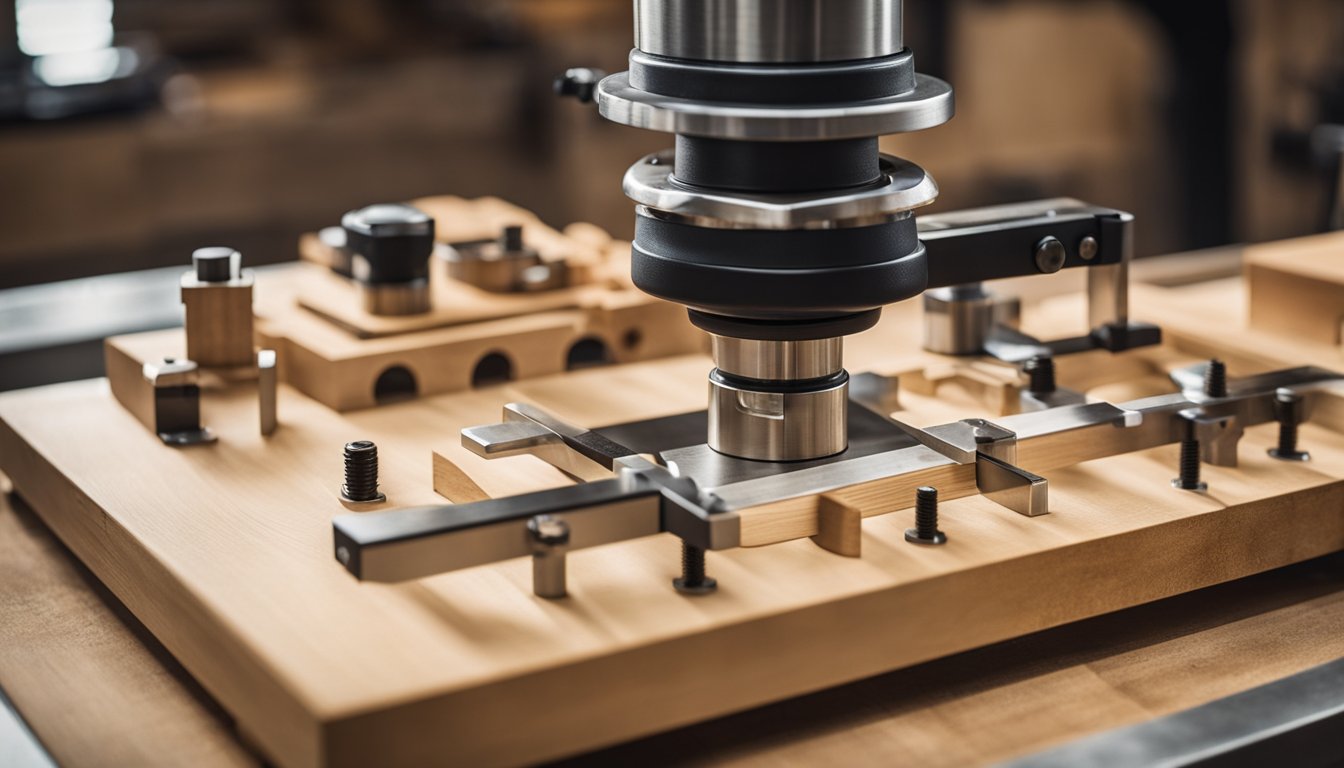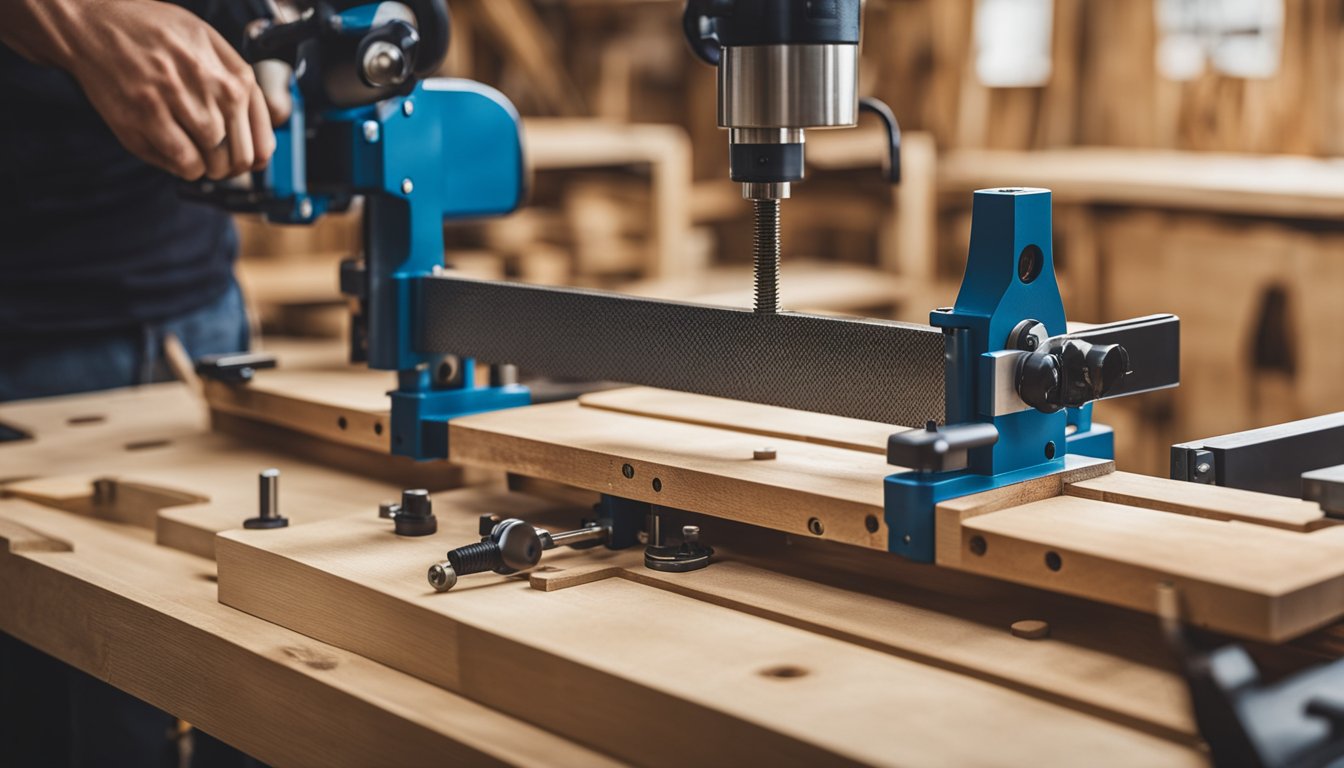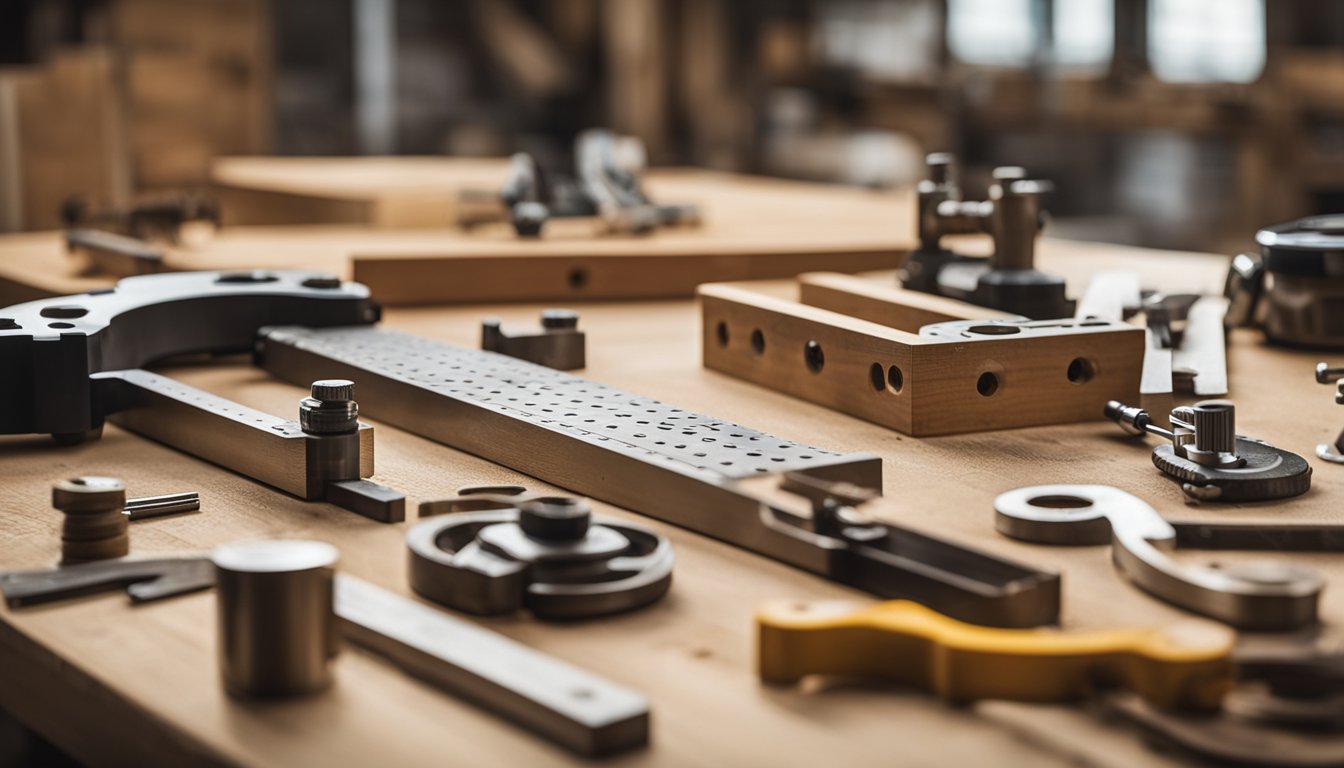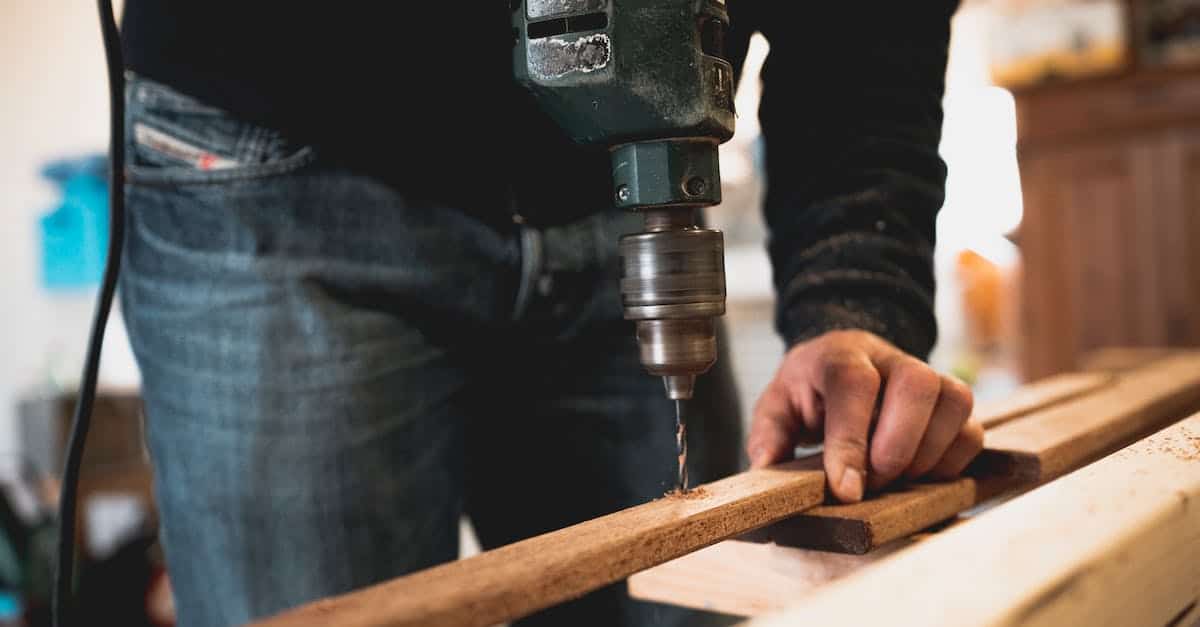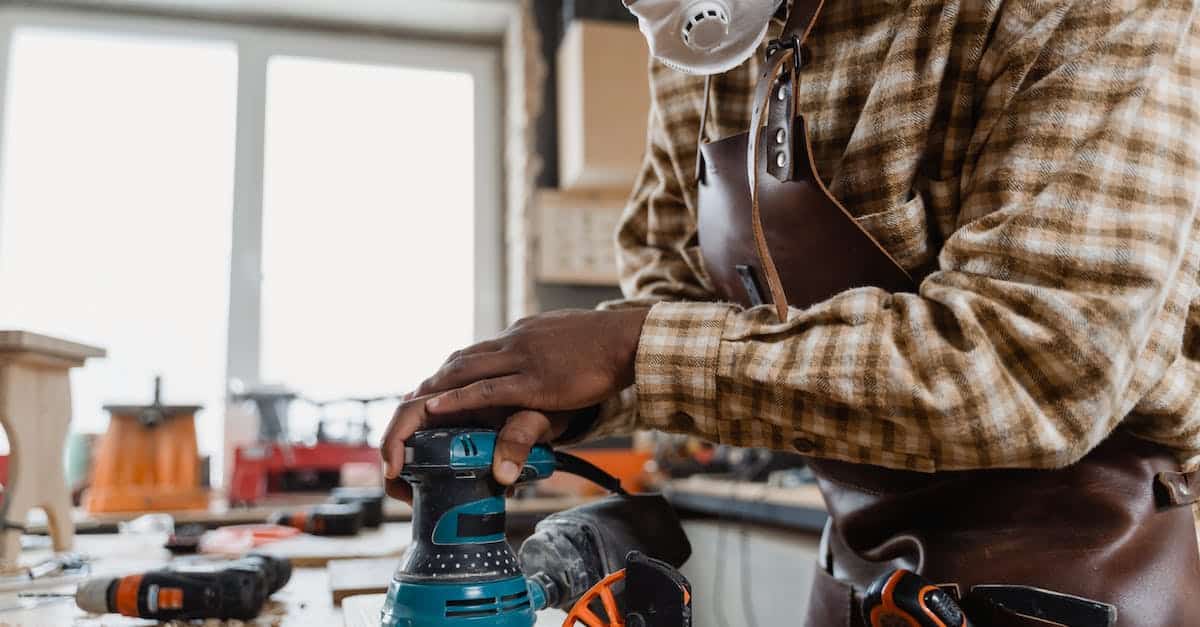If you’re new to woodworking, you may have heard the term “jig” thrown around by more experienced woodworkers. But what exactly is a woodworking jig? Simply put, a jig is a device that holds the workpiece in place, guides the tool, and helps you achieve precise, repeatable cuts and shapes. Jigs can be used for a variety of woodworking tasks, from cutting and shaping to joinery and more.
Understanding woodworking jigs is essential if you want to take your woodworking skills to the next level. With the right jig, you can achieve cuts and shapes that would be difficult or impossible to achieve by hand. Plus, using a jig can save you time and reduce the risk of mistakes. In this article, we’ll explore the different types of woodworking jigs, essential jig components, and advanced jig techniques. We’ll also cover safety and maintenance tips to help you get the most out of your jigs.
Key Takeaways
- Woodworking jigs are devices that hold the workpiece in place and guide the tool to achieve precise cuts and shapes.
- Essential jig components include the base, fence, and guides.
- Jigs can be used for cutting and shaping, joinery, and more. With the right jig, you can achieve cuts and shapes that would be difficult or impossible to achieve by hand.
Understanding Woodworking Jigs
If you are a woodworking enthusiast, you must have come across the term “jig.” A jig is a specialized tool that helps woodworkers perform specific tasks with precision and accuracy. Essentially, it is a guide or template that controls the movement of the workpiece and the tools, ensuring consistent and repeatable results.
Types of Jigs
There are many types of jigs, each designed to make woodworking tasks better, faster, and more efficient. Here are some examples to help you understand how important a jig is in woodworking:
- Miter jig: This type of jig allows the woodworker to quickly and accurately create cuts at 45-degree angles in either direction. This ensures that when the two cuts are joined, they will create a perfect 90-degree corner.
- Drill jig: A drill jig is a type of jig that guides the drill bit to make precise holes in the workpiece. This is especially useful when drilling multiple holes that need to be in the same location on different workpieces.
- Routing jig: This type of jig guides the router to make precise cuts in the workpiece. It is especially useful when making repeated cuts of the same shape or size.
Benefits of Using Jigs
Using a woodworking jig has many benefits, including:

- Accuracy: A jig ensures that your cuts, holes, and shapes are precise and consistent, which is important for creating high-quality woodworking projects.
- Efficiency: Using a jig can save you time and effort by allowing you to make accurate cuts and holes quickly and easily.
- Repeatability: A jig allows you to make the same cut or hole multiple times with the same level of precision, ensuring that all your workpieces are identical.
In conclusion, understanding woodworking jigs is essential for any woodworking enthusiast who wants to create high-quality projects with precision and accuracy. By using a jig, you can save time and effort while ensuring that your cuts and holes are consistent and repeatable.
Essential Jig Components
When it comes to woodworking jigs, there are a few essential components that you will need to ensure that your jig is effective and efficient. In this section, we will explore the three main components of a woodworking jig: clamps and clamping mechanisms, fences and guides, and inserts and spacers.
Clamps and Clamping Mechanisms
Clamps and clamping mechanisms are essential components of any woodworking jig. They are used to hold the workpiece securely in place while you work on it. There are many different types of clamps and clamping mechanisms available, including toggle clamps, screw clamps, and bar clamps.
Toggle clamps are particularly useful for woodworking jigs because they can be quickly and easily adjusted to hold the workpiece securely in place. They are also very strong and durable, making them ideal for use with heavy workpieces.
Fences and Guides
Fences and guides are another essential component of woodworking jigs. They are used to ensure that your cuts are straight and accurate. Fences are typically made from a straight piece of wood or metal that is attached to the jig. They can be adjusted to ensure that your cuts are at the correct angle and distance from the edge of the workpiece.
Guides are similar to fences, but they are typically used to guide the tool rather than the workpiece. For example, a router guide can be used to guide the router along a straight line, ensuring that your cuts are straight and accurate.
Inserts and Spacers
Inserts and spacers are used to customize your woodworking jig to fit your specific needs. Inserts are typically made from a thin piece of wood or plastic that is cut to fit the shape of the workpiece. They are used to fill gaps or create custom shapes in the jig.
Spacers are used to adjust the height of the workpiece in the jig. They can be made from a variety of materials, including wood, plastic, or metal. Spacers are particularly useful when working with irregularly shaped workpieces or when you need to make precise adjustments to the height of the workpiece.
In conclusion, these three components – clamps and clamping mechanisms, fences and guides, and inserts and spacers – are essential to any woodworking jig. By using these components, you can create a jig that is customized to fit your specific needs and ensure that your cuts are straight, accurate, and efficient.
Jigs for Cutting and Shaping
https://www.youtube.com/watch?v=k9rX8SS1xA0&embed=true
Cutting and shaping wood can be a challenging task, especially when you need to make precise cuts or repeat the same cut multiple times. This is where jigs come in handy. Jigs are specialized tools or devices that help woodworkers perform specific tasks with precision and accuracy. In this section, we will discuss some of the most common jigs used for cutting and shaping wood.
Sawing Jigs
One of the most common jigs used in woodworking is the sawing jig. A sawing jig is a device that holds the wood in place while you cut it with a saw. There are many different types of sawing jigs, including cross-cut jigs, rip-cut jigs, and bevel jigs. A cross-cut jig is used to make cross-cuts, while a rip-cut jig is used to make rip-cuts. A bevel jig is used to make angled cuts.
A table saw guide is a type of sawing jig that holds a piece of wood standing on its end so it can be cut accurately with a table saw. The guide helps to keep the wood in place and ensures that the cut is made at the correct angle.
Drilling Jigs
Drilling jigs are used to hold the wood in place while you drill holes. These jigs are especially useful when you need to drill multiple holes in the same location. A drilling jig can be used with a hand-held drill or a drill press.
A squaring block can help you create corners that come together at exactly 90 degrees. This is especially useful when you are building furniture or cabinetry.
Routing Jigs
A router jig is a type of jig that is used to guide a router along the edge of a piece of wood. This helps to ensure that the cut is made at the correct depth and angle. There are many different types of router jigs, including edge guides, circle jigs, and template jigs.
In conclusion, jigs are an essential tool for any woodworker. They help to make woodworking tasks easier and more accurate. Whether you are using a table saw, drilling, or routing, there is a jig that can help you get the job done.
Jigs for Joinery
https://www.youtube.com/watch?v=EMgPtUg8B-I&embed=true
When it comes to woodworking, joinery is a critical aspect of any project. Joinery involves connecting two or more pieces of wood together to create a strong and lasting bond. The type of joint used will depend on the project and the desired outcome. Jigs can help you achieve precise and repeatable joinery cuts, saving you time and effort. Here are a few common types of jigs used for joinery:
Dado and Box Joint Jigs
A dado joint is a flat-bottomed slot cut into one piece of wood that is designed to hold another piece of wood. A box joint is a type of joint that interlocks the ends of two pieces of wood. Both of these joints require precise cuts to ensure a tight fit. A dado blade jig can help you achieve accurate and repeatable cuts when creating dado joints. A box joint jig can help you create perfect box joints with ease.
Dovetail and Mortise-and-Tenon Jigs
Dovetail joints are a popular joint used in woodworking to create a strong and attractive joint. A dovetail jig can help you create perfect dovetail joints with ease. Mortise-and-tenon joints are another popular joint used in woodworking. A mortise-and-tenon jig can help you create precise and accurate cuts when creating this joint.
Pocket Hole and Doweling Jigs
Pocket hole joinery is a fast and easy way to create strong joints. A pocket hole jig can help you create perfect pocket holes with ease. Doweling is another popular way to join wood. A doweling jig can help you create precise and accurate cuts when creating dowel joints.
No matter what type of joint you need to create, a woodworking jig can help you achieve precise and repeatable results. By using a jig, you can save time and effort while ensuring that your joints are strong and long-lasting. So, the next time you need to create a joint, consider using a jig to make the process easier and more efficient.
Custom Jig Making
https://www.youtube.com/watch?v=UC-MuogAfqU&embed=true
Jigs are an essential part of woodworking projects. They help to ensure that your cuts are accurate, and your work is consistent. While you can buy jigs, it’s also possible to design and build your own custom jigs. Here are some tips to help you get started.
Designing Your Own Jigs
The first step in designing your own jigs is to determine what type of jig you need. Consider the woodworking project you’re working on and identify the cuts or tasks that could benefit from a jig. Once you’ve identified the task, you can start designing your jig.
When designing your jig, consider the materials you’ll be using. Plywood, MDF, Baltic birch plywood, melamine, particleboard, and scrap wood are all suitable materials for jig making. Choose a material that is sturdy enough to hold up to repeated use but also easy to work with.
Materials for Jig Making
When selecting materials for jig making, choose a material that is flat, stable, and easy to work with. Baltic birch plywood is an excellent choice for jig making because it is strong, stable, and has a consistent thickness. MDF is also a good choice because it is flat, smooth, and easy to machine. Melamine is another good option because it is durable and easy to clean.
Particleboard is a less expensive option, but it is not as strong as other materials and can be prone to warping. If you’re working with scrap wood, make sure it is straight and free from knots or defects.
Tips for Assembling Jigs
When assembling your jig, make sure to use glue and screws to ensure that it is sturdy and will hold up to repeated use. Use clamps to hold the jig in place while the glue dries.
When using your jig, make sure to follow the manufacturer’s instructions carefully. Always wear safety goggles and ear protection when using power tools.
In conclusion, custom jig making is a great way to ensure that your woodworking projects are accurate and consistent. By following these tips, you can design and build your own jigs that will help you achieve professional-looking results.
Safety and Maintenance
https://www.youtube.com/watch?v=tKWs5tcvlII&embed=true
Safe Jig Use Practices
When using a jig, it is important to prioritize safety to reduce the risk of accidents or injuries. Always wear appropriate safety gear such as gloves, safety glasses, and ear protection. Ensure that the jig is securely fastened to the table saw fence or adjustable fence before use. If you are using a vise or featherboard, make sure it is properly installed and adjusted to hold the workpiece securely in place.
When using a sacrificial fence, make sure it is properly aligned with the blade to prevent kickback. Never use a jig that is damaged or worn out, as it may not provide the necessary support or guidance. Always follow the manufacturer’s instructions when using a jig and never modify it without proper guidance.
Maintaining and Storing Jigs
To ensure that your jigs remain in good condition and provide accurate results, it is important to maintain and store them properly. Keep your jigs clean and free of debris, as sawdust and other particles can affect their accuracy. If your jigs are made of wood, use a wax or oil-based finish to protect them from moisture and prevent warping.
Store your jigs in a dry, cool place where they will not be exposed to direct sunlight or extreme temperatures. Keep them organized and easily accessible so that you can quickly find the right jig for the job. Regularly inspect your jigs for signs of wear and tear, and replace them as needed. By following these maintenance and storage practices, you can extend the life of your jigs and ensure that they provide accurate and reliable results every time you use them.
Advanced Jig Techniques
https://www.youtube.com/watch?v=PdtDpiBSeMM&embed=true
Jigs are essential woodworking tools that help you achieve precision, accuracy, and repeatability in your work. With advanced jig techniques, you can take your woodworking skills to the next level. Here are some techniques you can use to create complex shapes, improve jig performance, and achieve precise measurements.
Precision and Measurement
To achieve precise measurements, you need to use accurate tools such as squares and angles. When building jigs, ensure that all the parts are square and level. You can use squaring blocks to ensure that the jig is square. Pegboard is also an excellent tool for creating jigs that require precise measurements.
Creating Complex Shapes
Advanced jig techniques can help you create complex shapes with ease. For example, you can use a cradle to hold curved parts while you work on them. You can also use a stop block to ensure that the workpiece is positioned correctly. When creating through dovetails, you can use machine bolts and knobs to position the jig accurately.
Improving Jig Performance
To improve jig performance, you need to ensure that the jig is stable and secure. You can use tables and workbenches to provide a stable base for your jigs. When using a router, ensure that the jig is securely clamped to the workpiece. You can also use a crosscut sled to achieve accurate and repeatable cuts on a tablesaw.
In conclusion, advanced jig techniques can help you achieve precision, accuracy, and repeatability in your woodworking projects. By using the right tools and techniques, you can take your woodworking skills to the next level.
Jig Accessories and Upgrades
https://www.youtube.com/watch?v=UCm3GfKmVC8&embed=true
Jigs are essential tools in woodworking that help enhance precision and efficiency. In addition to the basic jigs, there are several accessories and upgrades that can help you get the most out of your jigs. Here are some of the most useful jig accessories that can help you take your woodworking projects to the next level.
Enhancing Jig Versatility
One of the most useful jig accessories is a clamping jig. This jig accessory allows you to clamp your workpiece in place, which is especially useful when working with odd-shaped or small pieces. A clamping jig can also help you make test cuts to ensure that your jig is set up correctly before making the final cut.
Another useful jig accessory is a drill press table. This accessory allows you to drill holes at precise angles and depths, which is essential when making furniture or cabinets. With a drill press table, you can easily drill holes for dowels, mortising, or dadoes.
Jig Accessories for Specific Projects
When working on specific projects, there are jig accessories that can help you get the job done faster and more efficiently. For example, a biscuit joiner jig is a useful accessory when working on chairs or cabinets. This jig accessory allows you to cut slots for biscuits, which are used to join two pieces of wood together.
A bushing jig is another useful accessory that can help you when working on furniture or cabinets. This jig accessory allows you to use a template to create precise mortises or dados.
Finally, a file jig is a useful accessory when working with circular saws. This jig accessory allows you to sharpen the teeth on your circular saw blade, which can save you time and money in the long run.
In conclusion, jig accessories and upgrades can help you get the most out of your jigs and take your woodworking projects to the next level. Whether you are working on furniture, cabinets, or other woodworking projects, there are jig accessories that can help you get the job done faster and more efficiently.

